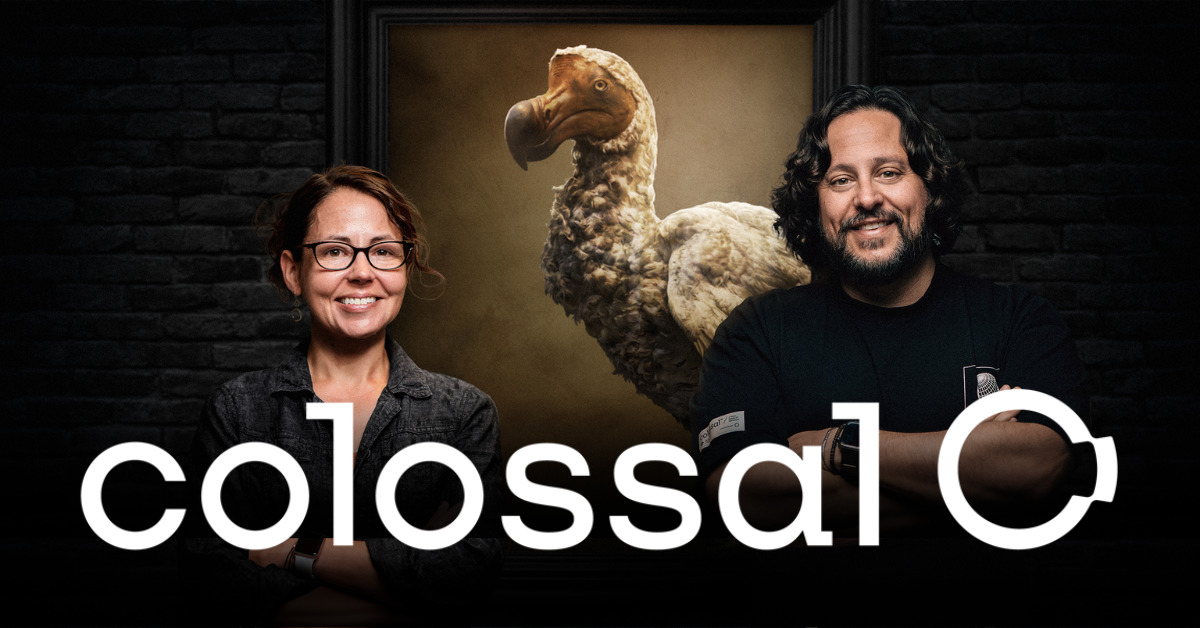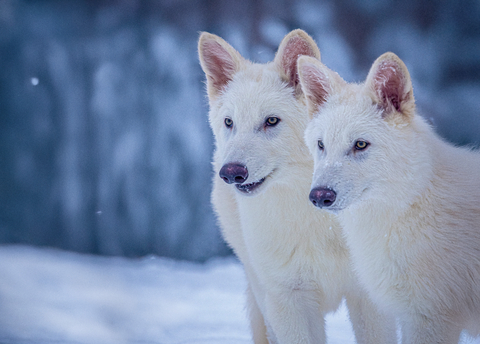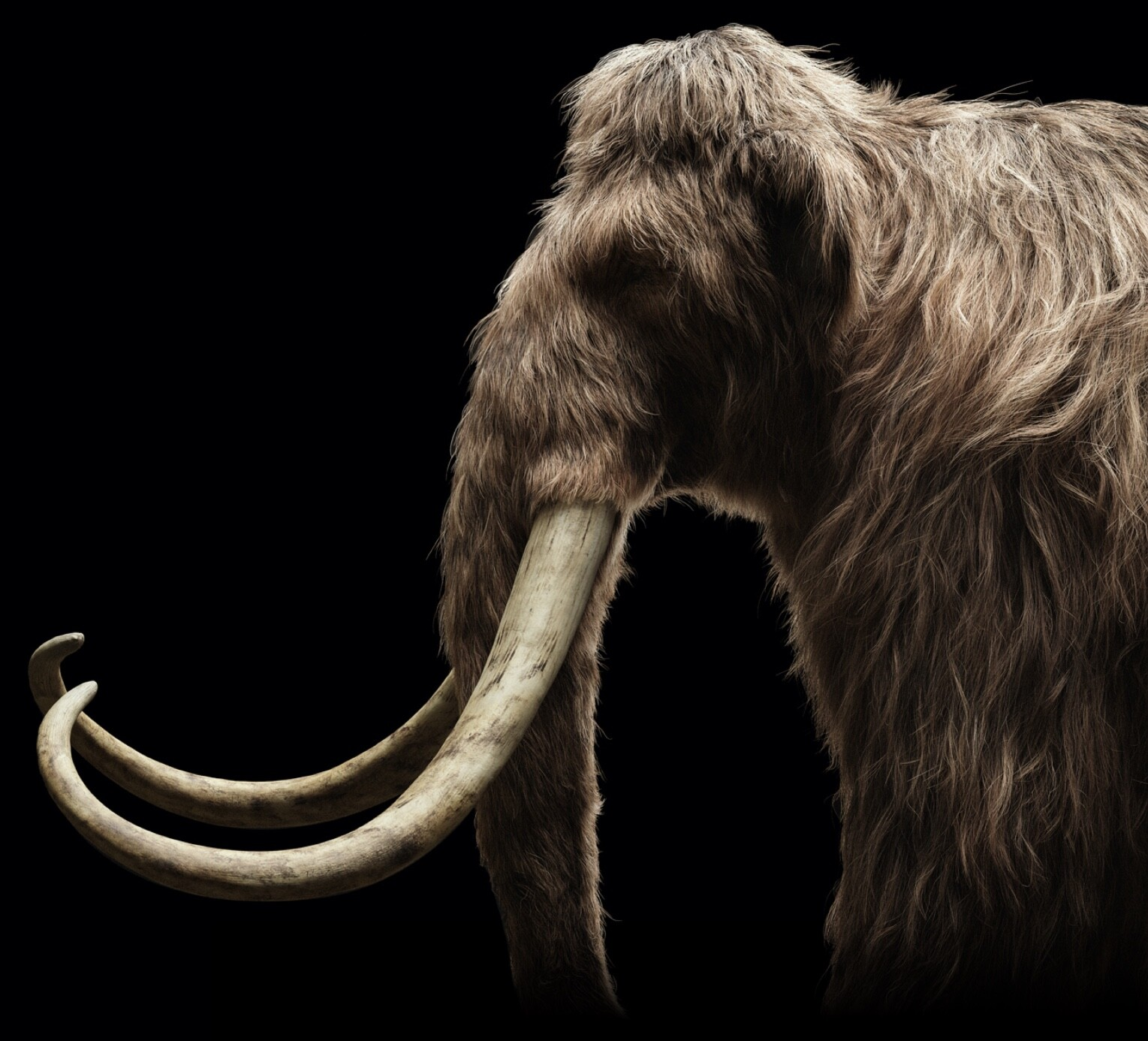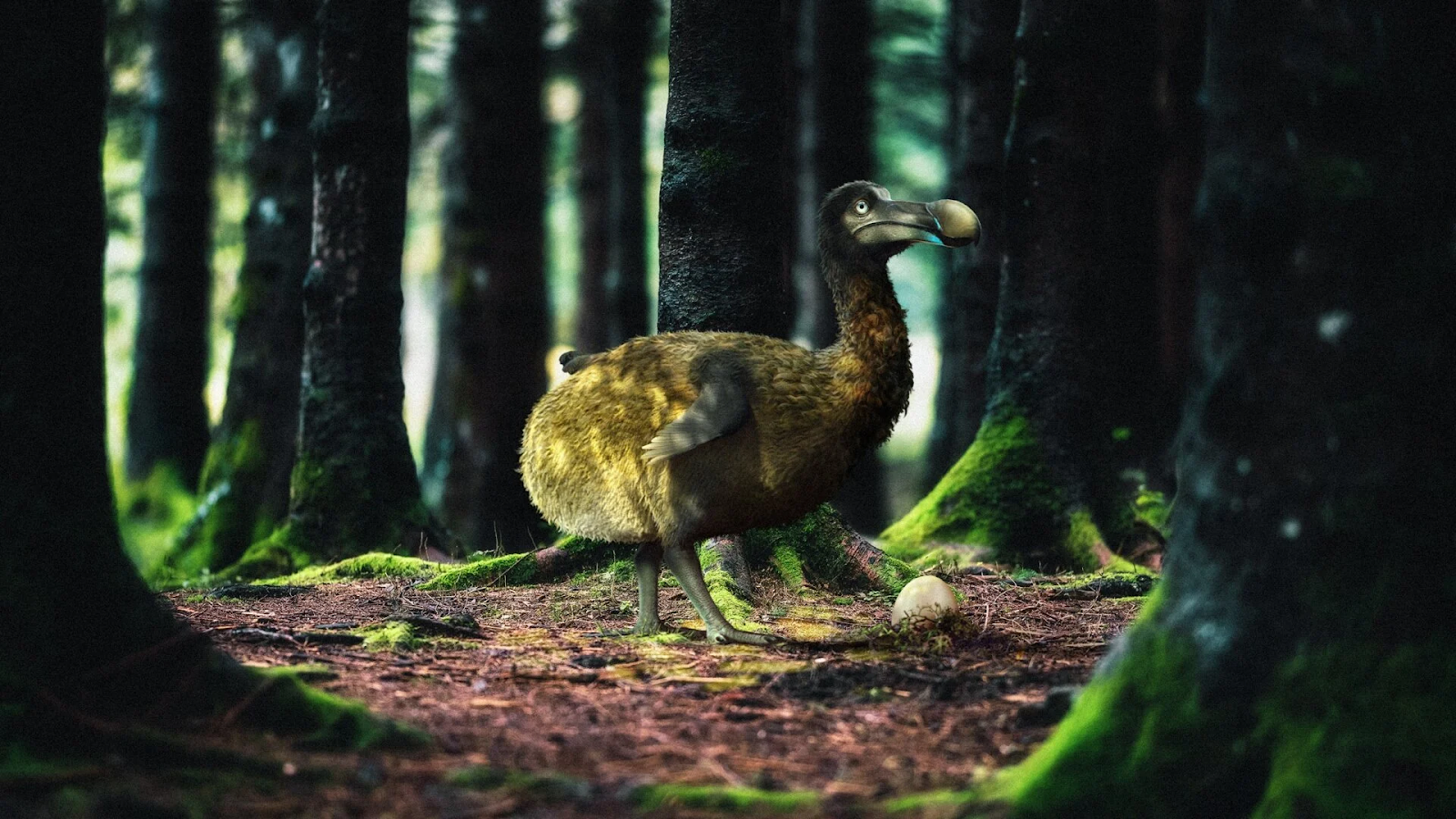Around 100,000 years ago, the forests of North America echoed with the haunting howls of a beast unlike any seen today: the dire wolf. Towering, powerful and fierce, it reigned at the top of the food chain alongside mammoths and saber-toothed cats. Though long extinct, these apex predators may no longer be confined to fossils and museum displays. A Texas-based company, Colossal Biosciences, claims to be resurrecting the dire wolf. But is this work a real leap into the age of de-extinction or a brilliantly executed PR stunt designed to make us believe we’re stepping into a real-life Jurassic Park?
The Mastermind
Based in Dallas, Texas, Colossal Biosciences is a biotechnology and genetic engineering company that believes that de-extinction is a key tool in fighting climate change. Its mission statement, as stated on their website, is “Accepting humanity’s duty to restore Earth to a healthier state, while also solving for the future economies and biological necessities of the human condition.”
De-extinction, the process of reviving extinct species, is the core of Colossal’s work. Its approach combines CRISPR gene editing (cutting and inserting desired DNA sequences), comparative genomics (comparing the DNA of extinct animals with their closest living relatives), and selective breeding (picking animals with helpful traits and using them as surrogates).

Above: Dr. Beth Shapiro (left), Chief Science Officer of Colossal, alongside Ben Lamm (right), Co-founder and Chief Executive Officer of Colossal. Image courtesy of Bio Informant.
Why De-extinction?
Public perception of de-extinction is largely rooted in fear, fueled by films like Jurassic Park, which dramatize the revival of extinct species as a recipe for chaos and disaster. These portrayals reinforce a cultural narrative that warns against interfering with nature and suggests that the past should remain untouched. However, Colossal Biosciences is challenging this view. The researchers argue that many extinctions were not natural, but the direct result of human activity. The World Animal Foundation now estimates that up to 50% of known species could face extinction by 2050.
Thus, in Colossal’s eyes, de-extinction is a sign of taking responsibility. It has defined de-extinction as not merely reviving past species, but merging the biodiversity from the past with the technologies from the future. According to the Colossal’s website, the company views de-extinction as “the process of generating an organism that both resembles and is genetically similar to an extinct species by resurrecting its lost lineage of core genes; engineering natural resistances; and enhancing adaptability that will allow it to thrive in today’s environment of climate change, dwindling resources, disease and human interference.”
Moreover, through de-extinction, Colossal seeks to combat climate change. The extinction of species leads to a decrease of biodiversity, a core characteristic needed for the flourishing of our ecosystems. If we think of our ecosystem as a Jenga tower, all the different blocks represent the factors needed for its survival: predators, prey, water, pollen, etc. If we remove too many blocks, the structure will collapse. If up to 50% of species are lost, as some projections suggest, the downstream effects will be devastating. Mass extinction could wipe out pollination and clean water, threatening food security and economic stability and further amplifying the climate crisis we are already experiencing. The United Nations warns that human activity has put over 1 million animal and plant species at risk of extinction and reports a 20% decrease in native species of most land habitats since 1990. Given the damage already done, some experts warn that Earth may be approaching a sixth mass extinction, with the last one being at the end of the Cretaceous Period 65 million years ago—the event that killed off the dinosaurs.
Predators, in particular, play a crucial role in maintaining ecological balance. Known as keystone species, apex predators help regulate prey populations, prevent overgrazing, and sustain the diversity of entire ecosystems. Their absence can cause chain reactions that destabilize habitats, collapse food webs and disrupt carbon cycles. The reintroduction of wolves in Yellowstone is clear evidence of predators' aid to ecosystems. Their presence reshaped river paths and revitalized vegetation by controlling deer overpopulation.
A Keystone Predator: The Dire Wolf
As mentioned before, the dire wolf was one of the most formidable predators on the continent thousands of years ago. It was the largest wolf to roam North America, with its body measuring 69 inches in length with a skull of 12 inches on average. It was larger and more robust than the modern gray wolf, with strong jaws adapted for hunting large prey. However, it became extinct over 10,000 years ago. Colossal's project involves editing gray wolf DNA to express traits associated with dire wolves.

Above: One of the wolves genetically edited by Colossal. Image courtesy of Colossal.
Ultimately, Colossal’s goal is to develop a de-extinction library of animals and to expand their efforts to include housing genomic DNA and embryos from currently endangered animals. Colossal has first tackled the dire wolf project for three main reasons:
- Technological feasibility: The dire wolf, although very majestic and the biggest wolf known to exist, is a close family relative to the grey wolf. To genetically add key characteristics of the dire wolf onto the grey wolf, researchers had to change only 20 genes.
- Impact on broader research: The goal of the project is to explore the possibilities of de-extinction and its implications for conservation. Wolves have been a key player in the introduction of biodiversity into Yellowstone. Yellowstone had become wolf-free, leaving elk without predators and therefore free to eat off trees in its immediate surroundings. However, without these trees to make their dams, beavers left the area. This cycle caused Yellowstone Park to suffer the consequences of a loss of biodiversity. However, in 1995, when the grey wolf was reintroduced to the national park, species returned and the river flow became more stable as erosion due to less elk passage and more vegetation decreased.
- Media frenzy: Most importantly, the dire wolf has become a famous figure due to the popular TV show, Game of Thrones. With the animal having so many fans, its de-extinction project would most certainly gain public attention, making the other projects and Colossal as a whole more famous.
De-Extinction in Action: Reviving the Dire Wolf
Colossal has outlined a six-step process for bringing the dire wolf back to life.
Step 1: Finding ancient DNA
The first step was locating DNA from dire wolf remains. Fortunately, previous researchers had already identified two sources: a single tooth and an inner ear bone. With these sources, scientists isolated ancient dire wolf DNA, but only about 20% of the full genome could be recovered.
Step 2: Reconstructing the original dire wolf genome
A genome is the complete set of genetic information found within an organism’s cells. After obtaining ancient dire wolf genomic DNA, Colossal scientists performed next-generation sequencing to create a digital log of the genetic information they found. Then they used bioinformatics to reconstruct a complete dire wolf genome, using information, when necessary, from closely related species to fill in the gaps.
Step 3: Genome Sequencing (comparing the dire wolf to the gray wolf)
Scientists compared the reconstructed genome from step 2 to that of its closest living relative: the gray wolf. With this comparison, researchers identified key genetic differences responsible for the distinctive characteristics of the dire wolf. Through this analysis, scientists identified 20 differences in 14 genes that needed to be altered to give the gray wolf the physical core characteristics of the dire wolf.
Step 4: CRISPR Gene Editing of a Living Proxy
Using CRISPR gene editing technology, Colossal scientists edited 14 genes in the gray wolf’s genome that were responsible for 20 key characteristics of the dire wolf. They focused on size, white coat, and characteristic vocalization.
Step 5: Stem Cell and Embryo Engineering
Scientists took somatic cells (non-reproductive cells) from gray wolves and reprogrammed them into induced pluripotent stem cells (iPSCs), which can develop into any cell type. These cells were then modified to include the dire wolf traits discussed in Step 4 and subsequently used to create embryos.
Step 6: The Perfect Surrogate
Lastly, the engineered embryos were introduced into surrogates (large dogs in this case), which gestated and birthed the dire wolf pups.
On October 1, 2024, Colossal announced a major breakthrough: their dire wolf project had succeeded. They welcomed two dire wolf pups, Romulus and Remus, named after the twins that were famously raised by wolves in Roman Mythology. In January 2025, the family grew with the birth of a third pup, Khaleesi, a name which references Game of Thrones, the series responsible for the popularity of the dire wolf. All three pups will live the rest of their lives in a protected area, undisclosed to the public, and will not be released into the wild.

Above: Romulus and Remus, two dire wolf pups. Image courtesy of Business Wire.
While Colossal’s advancements with the dire wolf are undeniably groundbreaking, the company has faced criticism due to the misuse of words and lack of transparency, which led some to label the project as a PR stunt.
Although the three pups exhibit many of the characteristics of the dire wolf, they are not true dire wolves. Instead, they are genetic hybrids: part gray wolf, part dire wolf. Ultimately, Colossal's approach focuses on replicating the physical appearance of dire wolves rather than their full genetic makeup. It aims to create functionally similar versions rather than exact replicas. Scrutiny arises from the fact that Colossal has not made this distinction clear. According to critics, the company chose very specific media outlets to run their story, making information scattered, incomplete, and difficult to understand.
Moreover, the project has sparked numerous ethical concerns, particularly regarding the fact that Colossal has poured millions into “reviving” a wolf that no longer has a place in today’s ecosystems and will ultimately live out its life in captivity. Critics argue that this effort, while scientifically impressive, does little to address urgent ecological needs. The dire wolf’s return is not essential to planetary survival, especially when countless endangered species currently on Earth would have benefited from such advanced cloning technologies. The question arises whether these resources could have been more impactful if directed toward preserving existing biodiversity.
Nonetheless, this project marks a historic first: using gene editing to reintroduce physical traits of an extinct apex predator into a living relative. This accomplishment pushes the boundaries of synthetic biology and represents a real possibility that extinction may no longer be permanent.
An Overview of Colossal’s Other Projects
Additionally, beyond the loss of keystone predators, Colossal has identified the loss of megafauna as one of the most pressing issues caused by extinction. Reviving these essential keystone species–specifically, the woolly mammoth, Tasmanian tiger, and the dodo–has become the company’s new main focus.
The mammoth, for example, was the species that helped maintain the mammoth steppe, which was once the most extensive biome on earth. Through their stomping and scrapping, the mammoths would remove the snow from areas, allowing the cold air to hit the ground directly. Because of this, the ground would remain frozen, preventing permafrost thaw (the melting of previously stable frozen ground). This was–and still is–very important for the planet, since permafrost thaw allows the release of previously trapped greenhouse gases into the atmosphere, which then accelerates global warming. Similarly, the dodo bird was known as the seed disperser of its ecosystem, and its absence has meant that most of Mauritius plants are now endangered.

Above: A woolly mammoth. Image courtesy of Colossal.
As of right now, the only major breakthroughs that this project has had is the creation of the woolly mouse. They were able to give mice the distinct woolly fur for which the mammoth is known for.
As of September 2025, Colossal Biosciences have achieved their goal of de-extincting the dire wolf. Their woolly mammoth project has seen the creation of the woolly mouse, and recently, it has made pivotal advancements in its dodo project. They have kept the germ cells (cells that eventually develop into sperm and egg) of the dodo’s closest living relative, the pigeon, alive and multiplying. They have also successfully genetically modified chickens to be used as surrogates.

Above: A representation of a dodo bird. Image courtesy of Gizmodo.
The ultimate goal is to reintroduce these keystone species into the wild. However, this goal is far from becoming reality. Questions on ethics and feasibility still loom. Colossal Biosciences views the dire wolf project as a major success, and one that will kickstart future projects.
